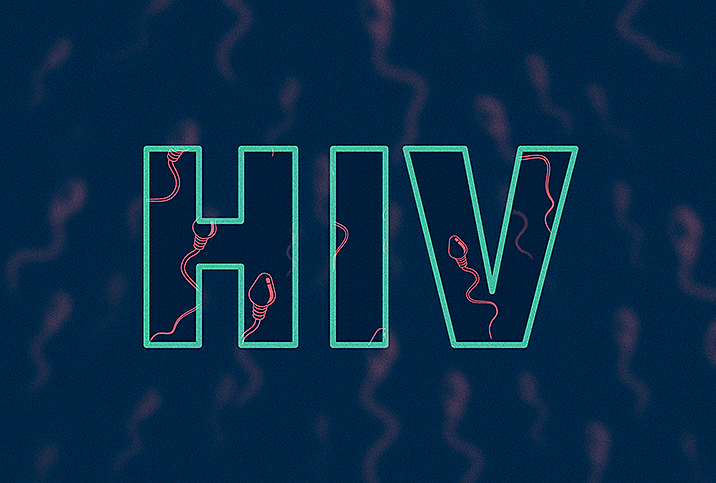How HIV/AIDS Impacts Sperm Count

Men who are HIV-positive can safely father children, but living with HIV does raise other issues relating to fertility. Unfortunately, even decades after the early days of the HIV/AIDS health crisis, how these conditions impact fertility is still an emerging area of study.
A hidden crisis
Understanding the relationship between HIV/AIDS and sperm health in men living with HIV or AIDS is no easy task. Not much data exists for this under-researched issue. What little information is out there is written for fellow researchers and not the average person without an advanced medical degree, so just understanding the articles can be a daunting task. This gray area also exists partly because medical research into the relationship between sperm health and HIV/AIDS has received little or no attention from health and media outlets.
Still, as complicated as it may be to sort through, a limited amount of information offers meaningful conclusions on how HIV/AIDS and related medications play a part in sperm productivity and general fertility in men. Here's what researchers have found so far.
Immunodeficiency and male fertility
HIV (human immunodeficiency virus), without the intervention of antiretroviral therapy (ART), can progress into the disease known as AIDS (acquired immunodeficiency syndrome). During the unchecked progression of HIV, sperm count and the overall quality of sperm will deteriorate over time. Simply put, HIV can drastically impact fertility as well as other areas of overall health.
HIV and AIDS target the immune system, and doctors keep a close eye on the level of CD4 cells—white blood cells sometimes referred to as T-cells—which is an indicator of how well someone's body can fight infections. The lower the level of CD4 cells, the more damage to the immune system. There's a positive correlation between CD4 cell counts and sperm count and motility. Doctors commonly notice lower CD4 levels in patients as HIV progresses.
A 2007 study of HIV-positive men and HIV-negative men indicated lower ejaculate volumes and decreased sperm motility rates in the infected men, even though most of them were receiving antiretroviral therapy.
Medications
Numerous factors make it difficult to determine how specific HIV medications affect sperm count and sperm motility. Reports are scattered and significant time gaps can pass between published results from applied research in this area.
Studies conducted without the assistance of external funding—theoretically having less implicit bias—have observed lower sperm motility rates by as much as 15 percent in patients taking certain ART medications. This means there is the possibility of specific ART drugs having more of a negative impact on male fertility rates than others.
AIDS, fertility and other nations
In countries where HIV treatment is less accessible and AIDS is a more common concern, the connection between these illnesses and infertility is clearer.
A 2002 report by the United Nations studied how fertility rates were affected by HIV and AIDS in sub-Saharan Africa. A connection between lowered fertility rates and the advent of the HIV/AIDS crisis is associated with changes in social behavior, increases in stigma associated with AIDS-diagnosed people and their partners, and the potential for the onset of AIDS to cause sterility in patients.
In general, research tends to focus somewhat more on how HIV/AIDS impacts female fertility, biology and behavior. What's clear, though, is that HIV and AIDS impact male fertility in the form of decreased sperm production.
Research reaps rewards
Certainly, leaps and bounds have been made in the treatment of both HIV and AIDS over the past couple of decades. People are now able to live longer lives and experience significantly fewer health issues from a diagnosis. HIV is now considered a manageable chronic illness rather than a precursor to a death sentence.
Despite these advances and a better quality of life for people with a positive diagnosis, there is still a significant gap in knowledge about how HIV affects men's ability to reproduce. Hopefully, more research is on the way that will reveal more conclusive answers for people with HIV and AIDS.
















